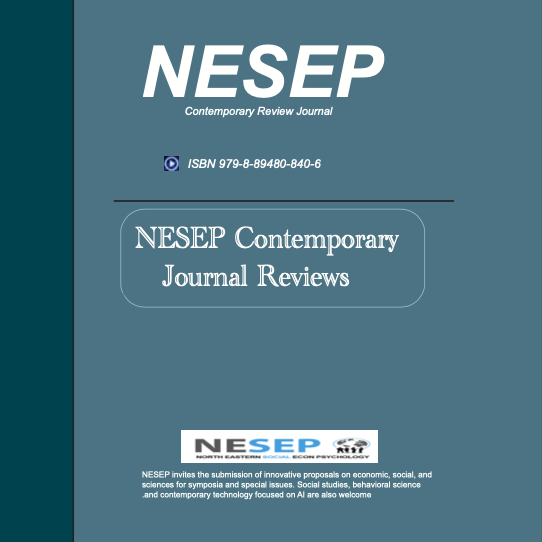Accepted Articles
We congratulate you on acceptance of your manuscript.

Annual Expo by the Journal of Young Explorers Meta and NESEP
- Fundamental or applied research
- Interdisciplinary research
- Judging on a rolling basis
- A work-in-progress research
- Completed research
- Unlimited topics and ideas
- ISBN 979-8-89480-840-6
- NESEP/NY-CSEF event at Harvard Club in NYC
An Analysis of the Economic Influences on National Hockey League Revenue
Abstract: The National Hockey League has experienced growth in popularity and revenue that the league hasn't seen in previous years. This paper analyzes the finances of the 31 National Hockey League teams under the timeframe of the previous Collective Bargaining Agreement between the NHL and the NHL Players’ Association. This includes the 2012-13 season to the 2020-21 season. Collecting financial estimates of revenue and operating income of each team resulted in a total number. Data relating to potential factors affecting revenue was collected to find what made up the total. This data pertains to a wide range of topics, some more influential than others, that affect a team's financial success. Using the available numbers, a model was created to express the amount of revenue generated by a given team. Of the differences between actual and estimated revenues of 182 individual seasons, all estimates were no more than 10 million off from the actual revenue. Additionally, 92.3% of estimates were within 5 million above or below the true value. These estimates were over a time of relatively little change over the NHL seasons.
Reference
[1] Alexander, Kern. “The Economic Determinants of Professional Sports Franchise Values.” Journal of Sports Economics, vol. 5, iss. 1, Feb. 2004, pp. 51-66.
[2] Büschemann, Deutscher.. “Did the 2005 Collective Bargaining Agreement Really Improve Team Efficiency in the NHL? .” International Journal of Sports Finance, vol. 6, iss. 4, 01 Jan. 2011, pp. 298-306
[3] Clopton. “An alternative view of public subsidy and sport facilities through social anchor theory.” City Culture and Society, vol. 4, iss. 1, Mar. 2013, pp. 49-55.
[4] Coates, Humphreys. “The Economic Impact of Postseason Play in Professional Sports.” Journal of Sports Economics, vol. 3, iss. 3, 01 Aug. 2004, pp. 291-299
[5] Ferguson, et al. “The Pricing of Sporting Events: Do Teams Maximize Profit.” Journal of Industrial Climate, vol. 31, iss. 3, Mar. 1991, pp. 297-310
[6] Humphreys, Mondello. “Determinants of Franchise Values in North American Professional Sports Leagues: Evidence from a Hedonic Price Model.” International Journal of Sports Finance, vol. 3, iss. 2, May 2008, pp. 98-105.
[7] Kahane. “Production Efficiency and Discriminatory Hiring Practices in the National Hockey League: A Stochastic Frontier Approach.” Review of Industrial Organization, vol. 27, iss. 1, Aug. 2005, pp. 47-71.
[8] Leadley, Zygmont. “When Is the Honeymoon over? National Hockey League Attendance, 1970-2003.” Canadian Public Policy / Analyse de Politiques, vol. 32, iss. 2, Jun. 2006, pp. 213–232.
[9] Lertwachara, et al. “An Event Study of the Economic Impact of Professional SportFranchises on Local U.S. Economies.” Journal of Sports Economics Aug. 2007, pp. 244-255.
[10] Nadeau, O’Reilly. “Developing a Profitability Model for Professional Sport Leagues: The Case of the National Hockey League.” International Journal of Sports Finance, vol. 1, iss. 1, 01 Feb. 2006, pp. 46-62